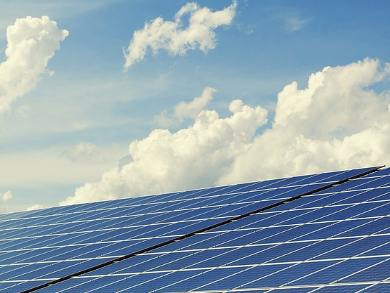Perovskite solar cells (PSCs) use perovskite-type compounds as the light-harvesting active layer. They are cost-effective and easy to produce. PSCs are a rapidly evolving technology; their efficiency and stability have increased significantly in only a few years. High-quality perovskite films are important for this improvement.
Kai Zhu, National Renewable Energy Laboratory, Golden, CO, USA, Michael Grätzel, École Polytechnique Fédérale de Lausanne (EPFL), Switzerland, and colleagues have combined the effects of a Lewis base and a Lewis acid to improve the device efficiency of PSCs. The team used the fullerene derivative bis-PCBM (an adduct between two ester molecules and one fullerene molecule, PCBM = phenyl-C61-butyric acid methyl ester) as a Lewis acid in the antisolvent, which is used for crystallization, and N-(4-bromophenyl)thiourea as a Lewis base in the perovskite-solution precursor.
The PSC device’s efficiency was improved from 19.3 % to 21.7 % when using this combination of Lewis base and Lewis acid. This is due to the passivation of defects, a larger perovskite grain size, and an improved charge-carrier separation and transport. Lewis acids can accept an electron from negatively charged defect sites or under-coordinated halide ions and passivate them. Lewis bases act as electron donors and can bind to the positively charged defects. Thus, the combination of Lewis base and Lewis acid can passivate both types of defect.
Structural defects also play an important in the degradation of PSCs, and the stability of the devices is improved by the combination of Lewis base and Lewis acid. The prepared devices retained 93 % of their conversion efficiency after 3,600 h in air at 20–25 °.
- Suppressing Defects Through Synergistic Effect of Lewis Base and Lewis Acid for Highly Efficient and Stable Perovskite Solar Cells,
Fei Zhang, Dongqin Bi, Norman Pellet, Chuanxiao Xiao, Zhen Li, Joseph J. Berry, Shaik Mohammed Zakeeruddin, Kai Zhu, Michael Grätzel,
Energy Environ. Sci. 2018.
https://doi.org/10.1039/c8ee02252f




